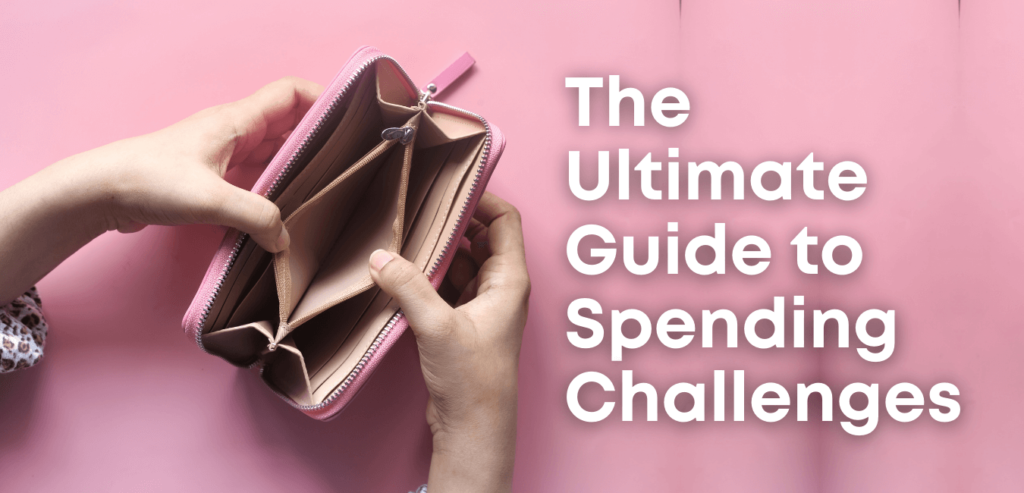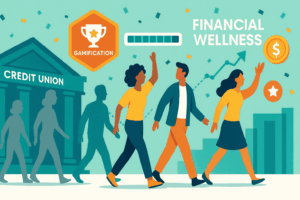No Spending Challenges make cutting your expenses and saving money more fun. Plus no spending challenges increase the likelihood you will achieve your financial goals. There are many ways to gamify expense reduction and different types of spending challenges you can participate in. This ultimate spending challenges guide will teach you all about the power of gamifying your spending through challenges, determine which challenge is right for you, and how to get started.
If you are interested in learning more about financial gamification in general check out Ostrich’s ultimate financial gamification guide.
Why Spending Challenges
Spending money is unavoidable in modern society. It’s the one area of personal finance everyone is familiar with, yet, is often most overlooked when it comes to financial planning. Paying down debt, saving money, investing for the future, and giving back are all important, but your spending habits play a big part in your ability to do those things. Using spending challenges you’ll be able to shift your spending priorities to focus on the necessities and the non-essentials that bring the most joy to your life.
One of the reasons budgeting is difficult is because we often don’t take into account the types of spending that bring us happiness. Using a variety of no spending challenges you will recalibrate your spending habits to focus on what you care most about and cut the areas that you spend on without fulfillment.
If you struggle with overspending, sticking to a budget, or simply want to achieve your goals faster then spending challenges may be the answer to your woes.
What are Spending Challenges
Spending challenges are game-like challenges that last a set period of time, have a regular check-in, and have a specified goal. Spending challenges can be done by individuals, couples, or even groups of people.
Research from the American Society of Training has shown that combining a regular progress check-in with an accountability partner increases your likelihood of achieving a goal by 95%. Ostrich’s spending challenges lean into this finding by making it easy to find and invite others with similar goals to be your accountability partner in spending challenges.
Types of Spending Challenges
The key characteristics to pay attention to when identifying the right spending challenge for you are the length of the challenge, the frequency of the check-in, and the goal.
Length of the challenge
How long will the spending challenge last? It’s important to set an end date. Even if you intend to continue the spending challenge into the future, the end date helps you stick to your goal in the short term. At the end of the spending challenge, you can always start again or update your goal.
Common challenge lengths include:
- 3-month spending challenges; an example is Drop It Like It’s Hot, Frugal Fall, and Freeze My Spending.
- 1-month spending challenge; an example is 4 Weeks For Me.
- 1-week spending challenges; such as Category Blackout and Stop Shop and Roll.
- 1-day spending challenge; The Cleanse.
Frequency of the check-ins
The second factor to consider is how frequently you wish to check in for your spending challenge. It’s important to keep your goals top of mind especially if there is daily temptation. For example, the Category Blackout No Spending Challenge is a 7-day spending challenge where you cut out a purchase you are unhappy with that you make almost every day. Often times this is tied to things like dining out, purchasing a coffee, online shopping, and other regular temptation purchases.
Whereas other spending challenges require a less frequent check-in such as Drop It like It’s Hot where you are canceling unwanted subscriptions each month. Rather than checking in daily, it makes more sense to check in once a month to identify recurring subscriptions that are underutilized.
Common savings challenge check in frequencies are:
- Daily Spending Challenges, such as Category Blackout and Stop Shop and Roll.
- Weekly Spending Challenges, such as You Need to Cut It.
- Monthly Spending Challenges, such as Drop It like It’s Hot.
Goal setting
The third major part of a spending challenge is the goal. What is that you want to accomplish?
It could be to cut out an expensive spending habit, jump-starting your savings, or simply resetting your spending priorities. The beauty of spending challenges is that they are easy to align with your other financial and non-financial goals.
Want to save more money? Try using a no spending challenge to jump-start your savings. Or perhaps you have other important life goals that you’ve been struggling with.
For example, if you have a goal to lose weight you could choose to cut out fast food as your no spending goal. This allows you to habit stack and align multiple goals together to increase your chances of skipping the drive-thru line and eating at home instead.
Example goals include:
- Cutting out unused subscriptions.
- Resetting your spending priorities to focus on necessities.
- Identifying the discretionary spending that brings you joy.
- Jump starting your savings.
- Finding more money to invest or pay off debt.
Who Should Use Spending Challenges?
Spending challenges are great for anyone struggling to save money, finding it difficult to stick to a budget, relying on credit cards or loans to cover expenses, or wanting to recalibrate their relationship with money. Because spending challenges can be done with others, a group spending challenge is a great way to get your partner, family, and friends who may not like thinking about money to start taking positive financial actions.
Implementing Your No Spending Challenge
Spending challenges can be done the old-fashioned way on pen and paper, in group chats, or using Ostrich’s mobile app.
Ostrich’s app has built-in reminders, rewards, and tracking to make it as easy as possible to get started and stick to a spending challenge. Additionally, it’s easy to invite others to join you in group challenges and keep your specific goal information private to you so you can participate with others who want to participate but have different spending goals from you.
We recommend using whatever tool works best for you.
Tips to Reduce Your Spending
A little planning and a lot of willpower!
Freeze Your Credit & Debit Cards
One way to limit your ability to make impulse purchases is to freeze your credit & debit cards. Most banks make it easy for you to log in to your online or mobile banking account and flip a switch to freeze your cards. This will reduce the likelihood of you making an impulse purchase. At the end of your no spending challenge, simply flip the switch back on and your cards will work fine once again.
Plan Your Week In Advance
Don’t sacrifice your health or wellbeing to complete a spending challenge. It’s important to have enough food and necessities to live a healthy life. Additionally, plan activities that are fun and free. For example, have friends or family come over for a game night or movie night. Plan a picnic at the park, work on your hobby or pick up a book that’s been on your reading list.
Unsubscribe from Marketing Emails
Next remove temptation from your life, by unsubscribing from those marketing emails. You can always resubscribe after you complete no spending challenge. Likely, you’ll enjoy having one less marketing email clogging up your inbox.
Log Out of Online Shopping
Log out of your online shopping accounts. If you are always on Amazon, Shein, or some other store, log out so it’s harder to spend money, if you do find yourself perusing during the week. This creates more friction for you to actually make an impulse purchase and stick to your no spending goal!
Suggested no spending challenges to include: Freeze My Spending, Frugal Fall, Stoppin’ Online Shoppin’, Category Blackout, Stop Shop & Roll, and Drop It Like It’s Hot.
What to do with your newfound spending habit and extra money?
Paydown debt.
Debt drains both your bank account and you, psychologically. Pay off high-interest rate credit card debt, payday loans, or other forms of revolving debt. Join a debt paydown challenge and try implementing one of the snowball or avalanche debt paydown methods to stay motivated.
Build your emergency fund.
It’s important to have at least a few months’ worth (6 months is considered healthy) of living expenses built up. This provides a cushion for your quality of life in case you lose your income. If you feel like 6 months isn’t enough try building your savings to the level of your annual salary or until you feel comfortable.
Invest for the long-term!
Another great use of your new savings is to invest. Research shows that investing for the long-term (10+ years) is the way to go. We recommend getting started with low-cost index funds vs. purchasing individual stocks and using the dollar cost average investing method. Check out our favorite brokerage accounts and our favorite auto investing tools.
Make an important purchase.
Once you’ve built up your emergency fund and started investing, use that extra money to make an important purchase. Don’t just spend the money for the sake of it – look for things that truly bring you fulfillment.
Take a small calculated bet.
Investing for the long-term is proven to be the most sure-fire and safe way to build wealth, but it is boring. Boring is good for your major goals. We like boring! But if you have a little extra money after making your boring investments and you are okay with losing a small amount of money, explore alternative moonshot investments. This could be anything from investing in cryptocurrency, NFTs, startups, art, collectibles, or that penny stock. The key is not to make this your main strategy. Never invest more than you can afford to lose not just financially, but also psychologically.
Benefits of Participating in Spending Challenges
There are many benefits from completing spending challenges whether you did one by yourself or with others.
Save money
Adjusting your spending through spending challenges no matter how small adds up and will help you save money. You will be less likely to make impulse purchases and will jump-start your savings. As you make progress in your spending challenge, you will be practicing budgeting, delay of gratification, and prioritization skills. Over time, these skills will help you make significant progress towards your financial goals.
Reset your spending priorities
By participating in a spending challenge, you effectively reset your spending priorities. You’ll know what it is like to not spend money in that one pesky spending area for a week and will be able to prioritize how important that spending is to you.
Build confidence to tackle other goals
After completing spending challenges you’ll be motivated to see what other financial goals you can tackle. You’ll be primed to start saving more, paying down debt, and investing in your future. Shoot! It may even encourage you to tackle non-financial goals.
Feeling of accomplishment
Spending challenges are simple and effective. That being said, it’s not easy to change your habits which is why you’ll feel accomplished as you complete more and more spending challenges. When we achieve goals the reward centers in our brains light up and we get a mood boost.
Conclusion
Spending challenges make saving money fun, simple, and keep you accountable for your goals. There are different types of spendings challenges that can be customized to meet your financial goals. When you participate in spending challenges with others you increase your chance of success and feel good sharing your wins with others. Using Ostrich, you can find the perfect spending challenge for you and even invite your friends to join you. Download Ostrich to get started on your first spending challenge today!














